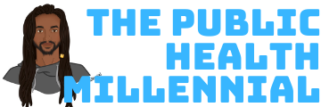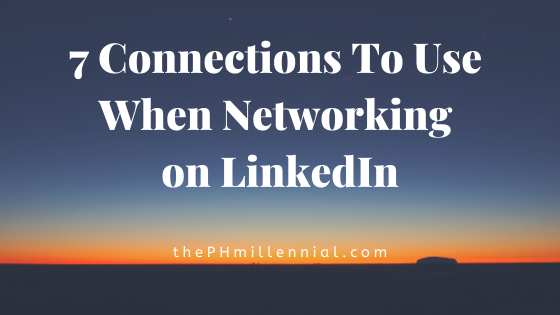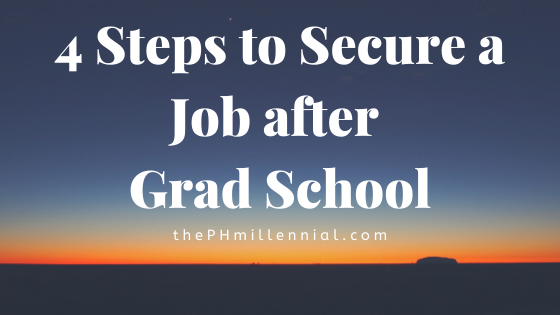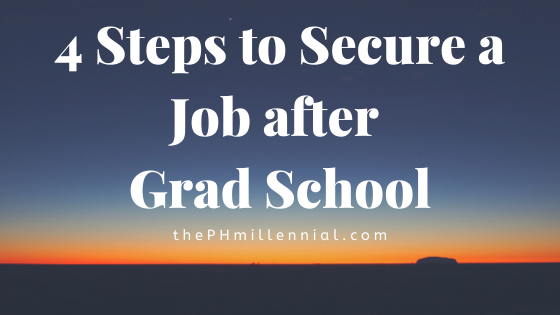Here I’ll share 7 connections to use when networking on LinkedIn.
For too long have people been trying to make strong, authentic, relationships, all while not utilizing the right network connection techniques.
Here I’m going to show you some of the different ways you can reach out to someone on LinkedIn. Remember, if you want to form a deep relationship, its better to start off on the right foot.
Also remember, if you want to take any connection request to the next level then add a call to action to connect more deeply. Yes, I mean try to get a chat scheduled with them.
Building real relationships aren’t as hard as one may make them out to be. Start here if you are beginning to build your LinkedIn network.
Support The Public Health Millennial Platform
(Related: Summer is Coming: A Message To First Year Master of Public Health Students)
1. The LinkedIn Connection Request From an Online Feature
As we know, LinkedIn is a great place to connect with professionals you may see in the news, on an online media outlet, or in journal/article you read.
Be sure to use LinkedIn to connect with cool people that you see doing work you are interested in.
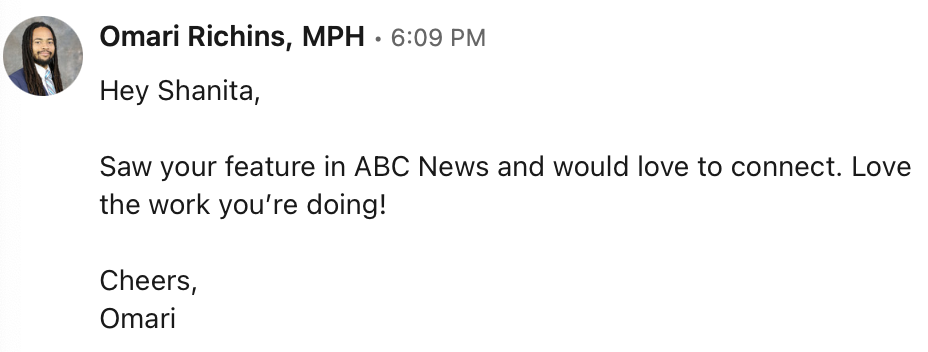
Note: You can follow someone and also send them a connection request. The benefit of doing this is that you can see their content on your feed without having to wait for the LinkedIn connection acceptance.
2. The LinkedIn Connection To A Friend You Already Know
Start building your LinkedIn network with people you already know outside of LinkedIn. Connect with friends in your field and who have similar aspirations as you.
A simple, “Hey [insert name], it was great to meet you [name event/common experience or person]. I would love to connect to stay in touch with you nd the work you are doing. Best, [insert your name].”

Keep it short and sweet if you already know the person and you know the connection is more of a formality. Building out your LinkedIn network of people you already share interest in will make it even easier to connect with other likeminded professionals/students.
3. The LinkedIn Connection With your Professor.
Formal is where it is at when connecting to a professor. That is of course, you all have a really great relationship outside of the regular.
“Hey Professor [Name], I’m really enjoying our public health evaluation course. It would be great to connect with you on LinkedIn.”
Connecting with professors on LinkedIn is a great way to stay in touch as well as keep up to date with the work the professor is doing. LinkedIn can also be used for soliciting request to work on projects with professors. I will say, most professors usually are contacted through email so this may not be the most effective way to connect. However, there are many professors that do stay very active on LinkedIn.
4. The LinkedIn Connection From a Webinar/Online Event/Conference
Use LinkedIn to ensure that you are connecting with people that you have met at events. The one mistake, I made at conferences is “collecting” business cards, but not reading out to the person to follow up either via LinkedIn or email. The power of meeting someone in person (or online) and then reconnecting with them on LinkedIn is a great way to build your network.
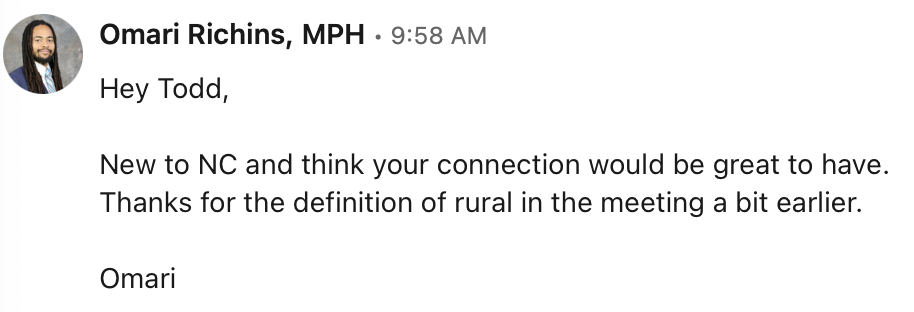
If you want to take this to the next level, then you could add in some context for a follow up chat. Let them know you would love to set up sometime to talk in the near future.
Being intentional of who you contact and reach out to can be essential in getting you connected to people of interest in the future.
5. The LinkedIn Connection for an Informational Interview
Too often people want to go in for a hard ask like sending their resume in the LinkedIn connection request asking for opportunities. It would do you a lot better if you first reached out for an informational interview and then went about for your ask.
Informational Interviews are a great way to get to know someone better as well as the work they are doing. Starting off with an informational interview is a technique that can be used to strengthen your relationships with particular people. It also helps to keep you at top of mind for any potential opportunities.
“Hey [Name], my name is Omari and I currently getting my MPH in the concentration of management and policy at the University of Florida. As I continue to expand my network and learn about the opportunities in the field, I came across your profile and I think the work you are doing with [company/specific work topic] is amazing. I would love to set up a phone call or zoom at your earliest convenience to get to know more about the work you are doing and see if there are any opportunities for me to contribute to you or your organization. I look forward to hearing from you. Cheers, Omari.”
Don’t ever feel ashamed to do a follow back up if you haven’t heard from the person in some time. Everyone is rather busy so making sure you are following up is essential. This is also important to do after you have completed your informational interview. Informational interviews are great ways to gain knowledge while also building your relationships and broader networks.
6. The LinkedIn Connection You Are Excited To Connect With
They are sometimes when browsing through LinkedIn and you see someone that you aspire to be more like. Well firstly, do your LinkedIn staling homework first. Then it is time to send out a connection request and note with it.
When you can make a personal connection or send something in your note that makes the person feel good about themselves, you are on the right path to a good connection. People like to feel good, so why not send them something that will make them appreciate you reaching out and sharing that they have provided you with value in somehow. Let the excitement lead you to want to provide value to this person – offer help, share an article they would find valuable, connect them to someone else of interest.
Very similar to the LinkedIn connection for the informational interview, reaching out to someone you are excited to meet should probably start by trying to find some time where you could strengthen this relationship. I would focus more on the side of trying to provide value to that person in your connection request or in subsequent communications.
7. The LinkedIn Connection Too Often Sent
Sending just a connection request on LinkedIn without an actual note/message can be harmful to actually building real relationships. At the end of the day networking is nothing more than forming relationships with people.
If you want to form a strong relationship, then why would you not send a note? As I’ve shared today, there are many ways you can send a short note to someone to give them context on the connection and help them to better connect with you.
Think about this. You want to connect with someone doing awesome work in your field. They might have tens or hundreds of connections that they have to get through. Who do you think will stand out – the person that just sent a connection or the person that sent a note with their connection request?
If you are truly trying to make meaningful connections, the least you can do is send a LinkedIn connection with a note. This is just good etiquette for building the foundation to grow a successful relationship.
Summary
There are many ways you can use LinkedIn. Utilizing the connection request is one way that you can elevate your LinkedIn relationships from the start. Here I share 7 ways you can connect with someone on LinkedIn.
- The Connection Request From an Online Feature
- The LinkedIn Connection To A Friend You Already Know
- The LinkedIn Connection With a Professor.
- The LinkedIn Connection From a Webinar/Online Event/Conference
- The LinkedIn Connection for an Informational Interview
- The LinkedIn Connection You Are Excited To Connect With
- The LinkedIn Connection Too Often Sent
By applying these connection request for specific people, you will surely up your LinkedIn game.
Which of these were most helpful for you?
